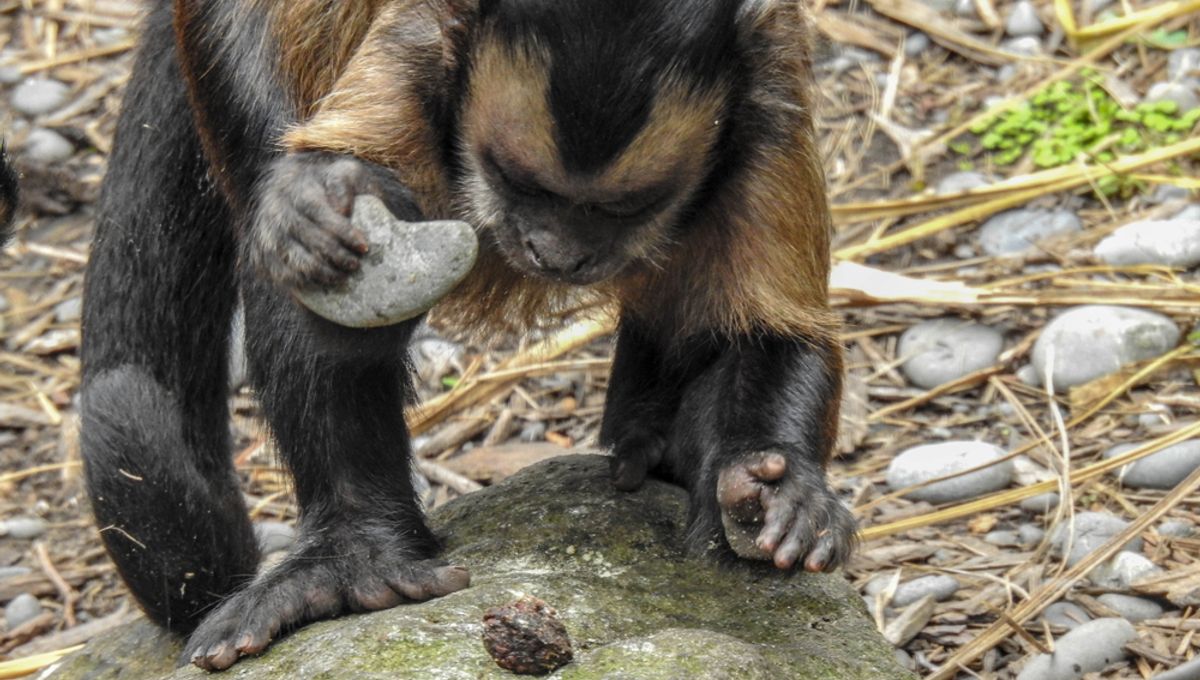
The debate over exactly when humans first arrived in the Americas might have been hijacked by some rather handy capuchin monkeys, according to a new analysis of Stone Age tools in Brazil. After examining the Pleistocene era artifacts, the study authors concluded that they were probably fashioned by the fuzzy little primates, casting major doubt over what was once considered strong evidence for early human occupation of the region.
Researchers scrutinized images of previous finds from the archaeological site of Pedra Furada in the Brazilian state of Piauí, where a cache of stone tools dated to between 32,000 and 50,000 years ago has been unearthed. Due to their antiquity, these lithic utensils are seen as “the most robust and coherent evidence sustaining an early human population… of the South American continent,” the authors write.
Throwing a spanner in the works, though, they also mention that New World capuchin monkeys are devilishly good at producing “human-looking lithic deposits.” In an email to IFLScience, study author Agustín Agnolín from Argentina’s National Scientific and Technical Research Council (CONICET) explained that capuchin tools “generally consist of pebbles and large flat rocks which are used as hammers and anvils respectively, and with which they crack nuts.”
“This isn’t very different to what many human groups did. Some of the rocks split during this process could easily pass for stone tools found in any human site.”
Such monkey mimicry has led to some heated disagreements between archaeologists over who – or what – created the stone deposits at Pedra Furada. To try and settle the debate, Agnolín and his colleagues re-interpreted some of the artifacts and carefully compared them to other tools made by both humans and capuchins.
In doing so, they discovered that the artifacts display only “unifacial flaking,” with no evidence of “bifacially thinned artifacts and flakes.” Such features, they say, are “uncommon in most human sites, but abundant in capuchin-monkey sites.”
Considering the morphology of the relics, Agnolín says “it’s unlikely they were made by human beings, because the lithic technology at the site is indistinguishable from that associated with monkeys.”
“On top of that, there is no other evidence that might indicate the presence of humans, such as hearths, animal bones displaying signs of consumption, symbolic objects like rock art or decorations, or human remains.”
In their write-up, the authors also mention that the ancient technology present at Pedra Furada appears not to have changed at all over thousands of years, which is very unusual for sites occupied by humans. After all, it’s our inventiveness that separates us from… well, monkeys.
“In sum, based on positive and negative evidence we are confident that the early archeological sites from Brazil may not be human-derived but may belong to capuchin monkeys,” write the researchers.
In terms of what all this means, Agnolín says that “our work strongly questions the nature of the site and prevents its continued use as evidence for the very early settlement of South America.”
“Obviously, this doesn’t mean that our occupation of America was recent or rule out the possibility of humans on the continent more than 20,000 years ago, but it does weaken one of the strongest pieces of evidence for a very early settlement of the region.”
The study has been published in the journal The Holocene.
Source Link: Stone Age Tools In Brazil May Actually Have Been Made By Monkeys